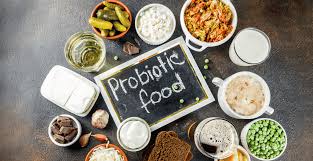
Staying away from natural fermentation may be one of the reasons for food intolerance
Leavening materials play important roles when making pastries, cakes, and biscuits. Without them, pastries and cakes will not rise and become tough. The most common leavening materials are baking powder, baking soda, and dry yeast (baker’s yeast), which are used to leaven bread, pizza dough, and pies. There are also three basic categories of fermentation materials:
1- Physical fermentation, which does not cause a chemical change, but is based on introducing air into the dough, which is what happens at the beginning of cake preparation when the eggs are beaten vigorously and then fat (whether butter, oil, or ghee), sugar, eggs, and fat are added to it while continuing to beat. Sugar helps air enter, so whipping creates bubbles or air pockets inside the dough, which makes it swell and appear larger. There is another way to do this, which is based on separating the egg yolks from the whites, then beating the egg yolks with the fat and sugar, then adding the flour. Then beat the egg whites alone until stiff, then add them to the dough and stir them gently so that no air comes out. This method was used in the past when making sponge cake (light) without the need to add baking powder.
2 Chemical leavening, which is adding baking powder or baking soda to pastries or cakes. It is important to note that baking powder differs from baking soda. Baking powder contains two substances, acidic and basic. For the baking powder to take effect, it is sufficient for the powder to be added to wet or liquid dough. The acidic and basic substances interact and small air bubbles form inside the dough, inflating it. The problem with brewing powder is the presence of corn flour, which is added to mix acidic and basic substances, and some people are allergic to corn flour.
Baking soda, which is only a base chemical, is stronger than baking powder and is therefore used to leaven heavier doughs, i.e. pastries and cakes that contain fruits and/or nuts. It needs an acidic substance (such as lemon juice, vinegar, sour milk, or yogurt) to react. If you encounter a recipe that requires a teaspoon of baking soda and you do not have it, you can replace it with two teaspoons of baking powder. If the amount of baking soda in the dough increases, it will leave bitterness in it.
Baker’s yeast, dry yeast, or active yeast, comes in the form of small granules or fresh tablets, as it takes longer to ferment the dough.
It should be noted that baking powder, baking soda, and baker’s yeast are all manufactured materials intended to facilitate baking and shorten its time. But using it has a tax, which is depriving the body of benefiting from the natural fermentation process that our ancestors used to do, as they used to leave the dough for long hours to ferment naturally, as the flour interacts with liquids and with bacteria that are naturally present in the air. The bacteria feed on the starches and proteins in the dough, and then extract it to become easier. Digestion. The distance from natural fermentation may be one of the reasons for food intolerance, but sufficient attention has not yet been shed on this important aspect, which is natural fermentation.






